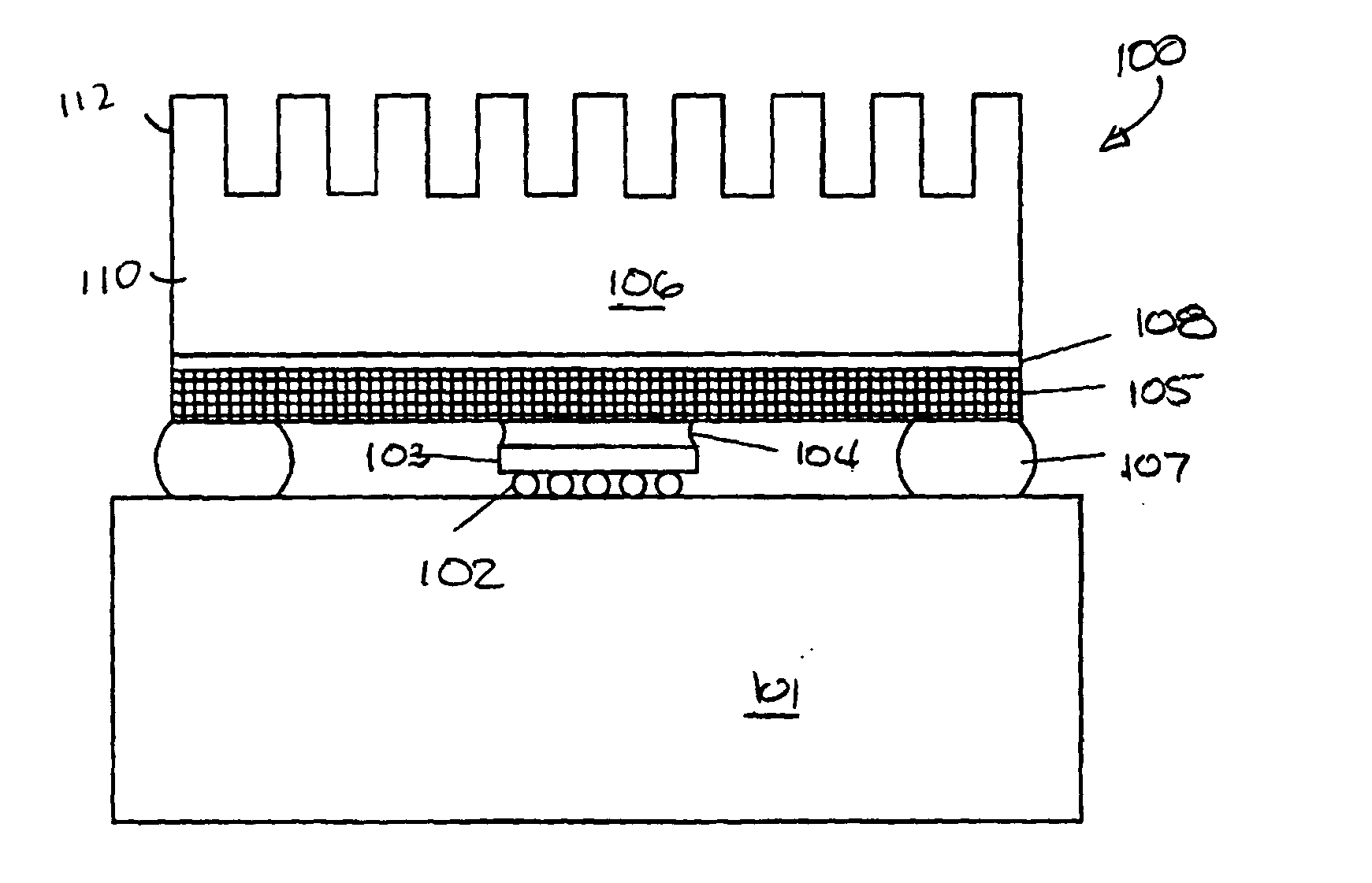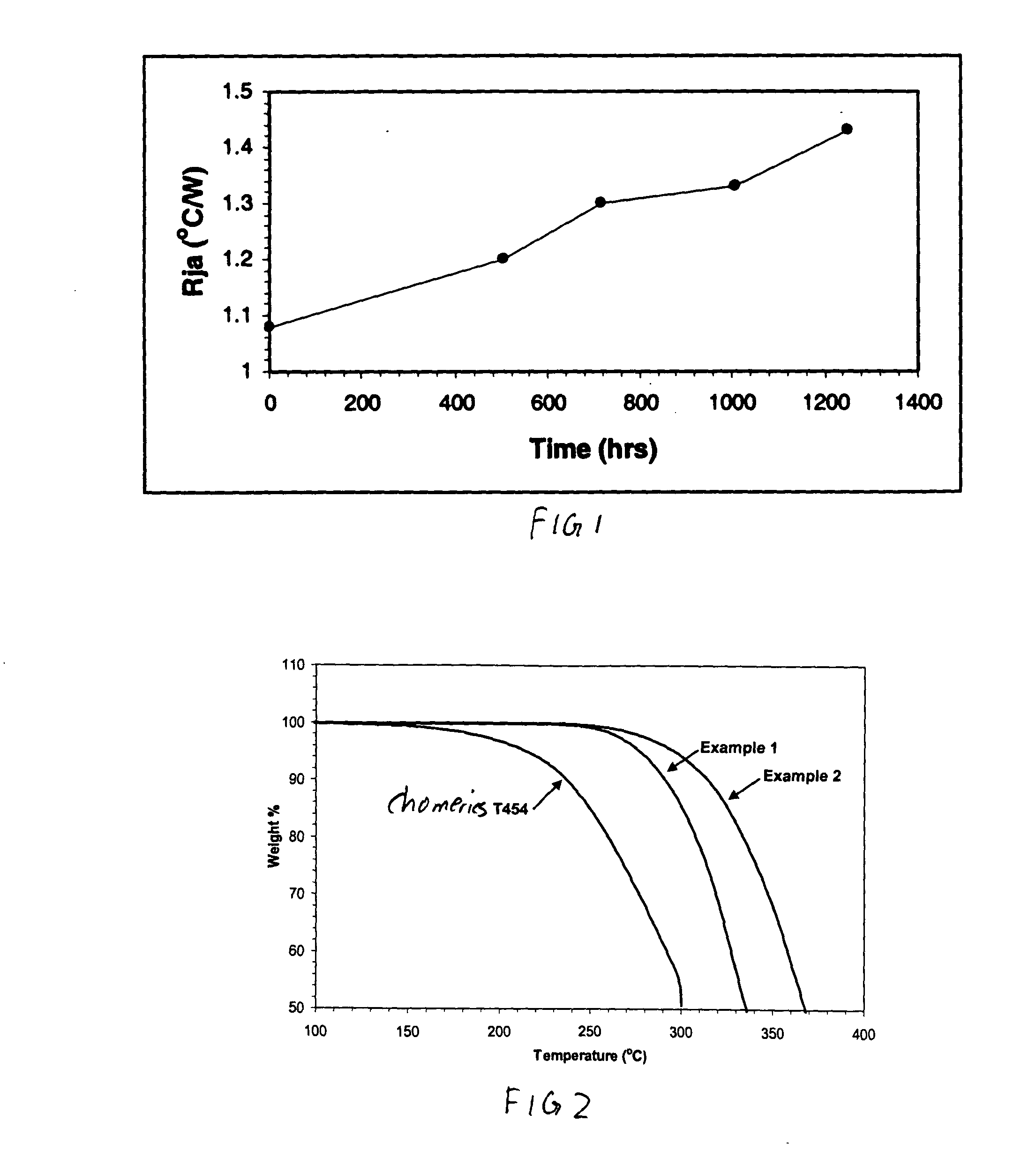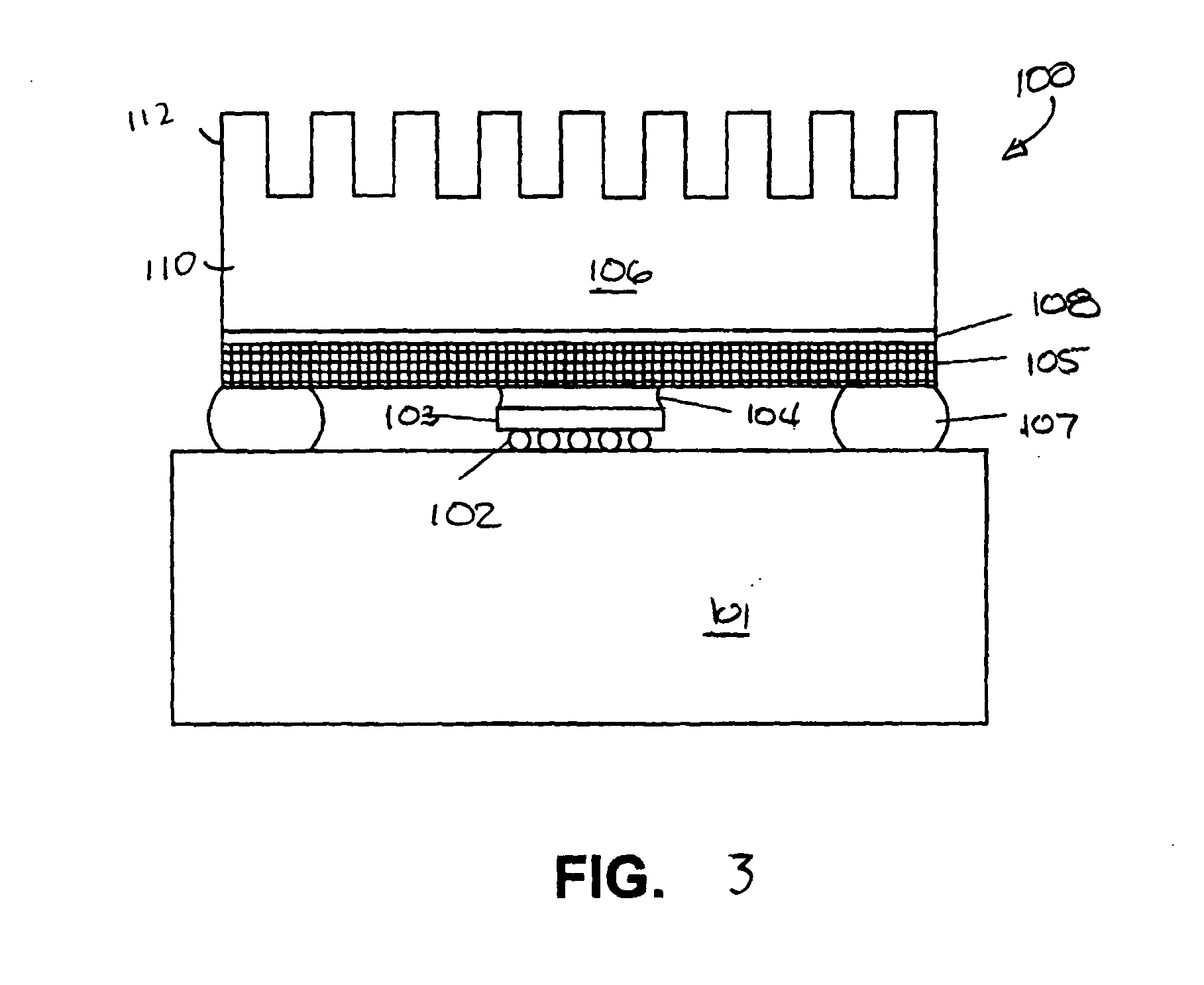Phase change thermal interface materials including polyester resin
a thermal interface and phase change technology, applied in the direction of electrical apparatus and process, electrical contruction details, semiconductor/solid-state device details, etc., can solve the problems of bulk thermal conductivity of these materials, insufficient reliability-stressing test, and greases migrating out of between the interfaces
- Summary
- Abstract
- Description
- Claims
- Application Information
AI Technical Summary
Problems solved by technology
Method used
Image
Examples
example 1
This example is representative of a polyester-based phase change thermal interface material that has significantly improved thermo-oxidative stability: 50 grams of toluene, 50 grams of polycaprolactone (POLYOL 1278® from Dow Chemical Company, Inc.) with a melting point of 50° C., and 50 grams of BN are mixed at 80° C. in a Ross double planetary mixer for 3 hrs. The material is cast onto 3-mil thick Mylar® film and dried at 100° C. to a final thickness of about 13 mils. The material is evaluated by an interfacial tester at 90 psi and 90° C. and found to have a thermal resistance of 0.1° C. cm2 / W. As illustrated in FIG. 2, TGA analysis in air shows that the material begins to degrade above about 200° C., with significant degradation occurring after about 300° C.
example 2
This example is representative of a polyester organoclay nanocomposite-based phase change thermal interface material that has significantly improved thermo-oxidative stability: 50 grams of toluene, 49 grams of polycaprolactone (POLYOL 1278® from Dow Chemical Company, Inc.) with a melting point of 50° C., 49 grams of BN, and 2 grams of organoclay (Nanomer® I.30 P from Nanocor, Inc.) are mixed at 80° C. in a Ross double-planetary mixer for 3 hours. The material is cast onto 3-mil-thick Mylar® film and dried at 100° C. to a final thickness of about 13 mils. The material is evaluated by an interfacial tester at 90 psi and 90° C. and found to have a thermal resistance of 0.1° C. cm2 / W. As illustrated in FIG. 2, TGA analysis in air shows that the material begins to degrade above about 200° C., with significant degradation occurring after about 320° C.
PUM
| Property | Measurement | Unit |
|---|---|---|
| melting point | aaaaa | aaaaa |
| melting point | aaaaa | aaaaa |
| diameter | aaaaa | aaaaa |
Abstract
Description
Claims
Application Information
 Login to View More
Login to View More - R&D
- Intellectual Property
- Life Sciences
- Materials
- Tech Scout
- Unparalleled Data Quality
- Higher Quality Content
- 60% Fewer Hallucinations
Browse by: Latest US Patents, China's latest patents, Technical Efficacy Thesaurus, Application Domain, Technology Topic, Popular Technical Reports.
© 2025 PatSnap. All rights reserved.Legal|Privacy policy|Modern Slavery Act Transparency Statement|Sitemap|About US| Contact US: help@patsnap.com



